
伤口世界
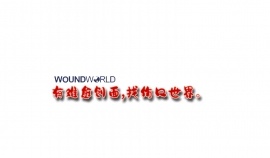
- 星期一, 14 8月 2023
Shared wound care and the implementation tipping point: patient engagement to standardise practice
Practitioners have advocated for new ways of working, such as shared wound care, to address the challenges in chronic wound management. Shared wound care practiced alongside the use of long-wear advanced foam dressings has the potential to optimise community wound care*; releasing time for nurses and healthcare systems, and empowering patients. Many practitioners already use elements of shared wound caren with patients but require support to implement the approaches more formally and reduce practice variation. This article will discuss shared wound care from an individual practitioner’s perspective, addressing how shared wound care is beneficial, accessible, clinically effective, scalable, and implementable, and facilitate discussions about standardising implementation within their health system.
*Wear time of up to 5 to 7 days (Simon and Bielby, 2014; Joy et al, 2015; Smith+Nephew, 2016b; 2016a)
Authors:
Amanda Loney, Certified Nurse Specialised, Wound, Ostomy and Continence (WOCC(C)), Bayshore Home Care Solutions Hamilton, Ontario, Canada;
Catherine Milne, Advanced Practice WOC Nurse in Bristol, Connecticut, Clinical Instructor Yale School of Nursing, Connecticut, United States
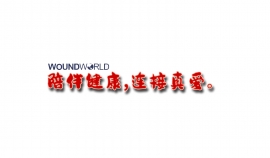
- 星期四, 10 8月 2023
Blue light photobiomodulation: a therapy to reactivate the healing process of stagnant wounds of different aetiologies
Authors:
Aldo Conti, Massimiliano Brilli, Edgardo Norgini, Stefano Falini, Laura De Fina, Genni Spargi and Stefano Gasperini
Stagnant wounds are wounds that don’t progress in the healing process,despite adequate therapy. Blue light photobiomodulation is a novel therapy that has been demonstrated to positively influence wound healing by stimulating the resolution of the inflammatory response and promoting tissue repair. This case series evaluated the effect of photobiomodulation on five patients with silent wounds of various aetiologies who were treated with blue light for four weeks. At the end of the observation period, five patients had a significant reduction in lesion area, an improvement in wound bed score and a reduction in pain.
Aldo Conti is a Wound Care Nurse Expert, Wound Care Outpatient Clinic, Hyperbaric Medicine Service, UOC Anaesthesia and Reanimation;
Massimiliano Brilli is a Wound Care Nurse Expert, Wound Care Outpatient Clinic, Hyperbaric Medicine Service, UOC Anaesthesia and Reanimation;
Edgardo Norgini is a Wound Care Nurse Expert, Wound Care Outpatient Clinic, Hyperbaric Medicine Service, UOC Anaesthesia and Reanimation;
Stefano Falini is Head of Hyperbaric Medicine Service, UOC Anaesthesia and Reanimation;
Laura De Fina, Hyperbaric Medicine Service, UOC Anaesthesia and Reanimation;
Genni Spargi is Director UOC Anaesthesia and Reanimation; all at Misericordia Hospital, Grosseto, Italy;
Stefano Gasperini is a Medical Advisor, Pisa, Italy
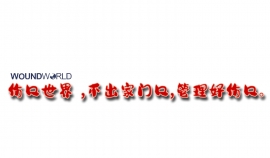
- 星期二, 08 8月 2023
重组人表皮生长因子在面部软组织损伤美容修复中的应用
朱由瑾,杨晓静,冯冬梅(河北北方学院附属第一医院皮肤科河北张家口075000)
基金项目:张家口市科学技术研究与发展计划(项目名称:激光联合皮下分离术治疗瘢痕的临床研究:项目编号:18l1032D一4)
[摘要]目的:评价重组人表皮生长因子在面部软组织损伤美容修复中的应用价值。方法:按照随机数字法将2016年1月一2018年1月笔者医院收治的100例面部软组织损伤患者分为对照组与研究组,每组50例。对照组采用美容整形外科手术进行修复,研究组在对照组基础上加用重组人表皮生长因子凝胶。比较两组患者修复效果、住院时间、损伤愈合时间及术后并发症发生情况。
结果:研究组修复效果明显高于对照组,研究组的损伤愈合时间明显短于对照组,两组比较差异有统计学意义(P<0.05);两组患者住院时间比较,差异无统计学意义;研究组术后并发症发生率为8。00%,明显低于对照组的24.00%,差异有统计学意义(P<O.05)。结论:重组人表皮生长因子能促进面部软组织的损伤修复,提高美容修复效果,降低术后并发症。
[关键词]面部软组织损伤;美容修复;重组人表皮生长因子;凝胶;整形外科手术
[中图分类号]R751.05
[文献标志码]A
[文章编号]1008—6455(2019)一01-0061-03
Application of Recombinant Human Epidermal G的wth Factor in the Cosmetic
Repair of Facial Soft Tissue Injury
ZHU You_jjn,YANG Xiao_jing,FENG Dong—mei
(Department of Dermatology, the First Affiliated Hospital of Hebei North University. zhangjiakou 075000,Hebei,China)
Abstracts: Objective To evaluate the value of recombinant human epidermal growth factor in the cosmetic repair of patients with facial soft tissue injury.
Methods 100 patients with facial soft tissue injury which was divided into control group and observation group according to random number table in our hospital from January 2016 to January 2018, 50 cases in each group. The patients were repaired by aesthetic plastic surgery in control group and the patients were added recombinant human epidermal growth factor gel based on the aesthetic plastic surgery in research group. The good rate, hospital stay, injury healing time and postoperative complication was compared between two groups.
Results The good rate of observation group was significantly higher than that of control group, the injury healing time of observation group was significantly shorter than that of control group(P < <0.05), there was no statistical significance on hospital staybetween two groups, the occurrence rate of postoperative complication in observation group(8.00%) was significantly lower than that of control group(24.00%,P<0.05). Conclusion Recombinant human epidermal growth factor could promote the repair of facial soft tissue injury, improve the effect of cosmetic repair and reduce postoperative complication.
Key words: facial soft tissue injury; esthetics repair; recombinant human epidermal growth factor; gel; plastic surgery
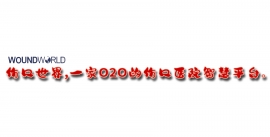
- 星期一, 07 8月 2023
物联网在医疗领域中的应用探析
严林淯 1 ,林治 2
(1. 榆林学院,陕西 榆林 719000;2. 新余学院,江西 新余 338004)
摘 要:随着我国当前信息技术的不断发展,物联网在当前时代得到了广泛的应用,物联网在医疗领域中的应用不仅有助于从整体上提高医疗服务水平,还使医疗更加具有信息化的特征,不断地提高医疗工作的效率以及质量,因此当前在医疗领域中,物联网的应用是非常广泛的,相关研发人员应当不断地提高物联网系统的效率和质量,使物联网可以和医疗服务进行深度的融合,不断地推动我国医疗领域的持续性发展。
关键词:物联网;医疗领域;医疗信息化
中图分类号:TN929.5;TP391.44 文献标识码:A
文章编号:2096-4706(2020)01-0176-03
Application of Internet of Things in Medical Field
YAN Linyu1 ,LIN Zhi 2
(1.Yulin University,Yulin 719000,China;2.Xinyu College,Xinyu 338004,China)
Abstract:With the continuous development of information technology in China,the internet of things has been widely used in the current era. The application of the internet of things in the medical field not only helps to improve the overall medical service level,but also makes the medical treatment more information-based,and constantly improves the efficiency and quality of medical work. Therefore,the application of the internet of things in the medical field at present is very extensive. Relevant R & D personnel should constantly improve the efficiency and quality of the internet of things system,so that the internet of things can be deeply integrated with medical services,and constantly improve the sustainable development of China’s medical field.
Keywords:internet of things;medical field;medical informatization
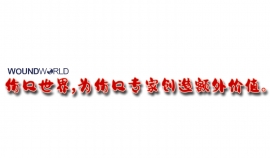
- 星期五, 04 8月 2023
光子嫩肤技术在面部色素性皮肤病治疗中的临床应用效果
张 娟 1 ,王东海 2 ,李 彦 3
(1. 河南省内乡县人民医院皮肤科,河南 南阳,474350;2. 河南省宝丰中医院皮肤科,河南 平顶山, 467400;3. 河南省人民医院皮肤科,河南 郑州,450000)
作者简介:张娟 , 女,主治医师,研究方向:面部毁容性皮肤病诊治、激光美容,邮箱:该Email地址已收到反垃圾邮件插件保护。要显示它您需要在浏览器中启用JavaScript。。
【摘 要】 目的 探讨光子嫩肤技术在面部色素性皮肤病治疗中的临床应用效果。方法 对 112 例面部色素性皮肤病患者实施光子嫩肤技术治疗。结果 雀斑、痤疮后色素沉着、 脂溢性角化、 黄褐斑、其他色素沉着的有效率分别为 97.37%、87.10%、61.90%、57.14%、37.50%。结论 光子嫩肤技术对面部色素性皮肤病有一定治疗效果,尤其对雀斑、痤疮后色素沉着治疗效果显著。
【关键词】 光子嫩肤技术;面部色素性皮肤病;雀斑;痤疮后色素沉着;脂溢性角化;黄褐斑
DOI:10.19593/j.issn.2095-0721.2019.06.019
Clinical application effect of photon skin tender technique in treatment of facial pigmentation skin disease ZHANG Juan 1, WANG Dong-hai 2, LI Yan3(1.Department of Dermatology, People's Hospital of Neixiang County, Henan Province, 474350, China; 2. Department of Dermatology, Baofeng Hospital of Traditional Chinese Medicine, Henan Province, 467400, China; 3. Department of Dermatology, Henan People's Hospital, Henan Province, 450000, China)
[ABSTRACT] Objective To explore the clinical application of photorejuvenation in the treatment of facial pigmented skin diseases.Methods 112 patients with facial pigmented skin disease were treated with photorejuvenation. Results The effective rates of freckles, post-acne hyperpigmentation, seborrheic keratosis, chloasma and other pigmentation were 97.37%, 87.10%, 61.90%, 57.14%, 37.50%, and freckles and post-acne pigmentation efficiency. Conclusion Photon rejuvenation technology has certain therapeutic effects on facial pigmented skin diseases, especially for freckles and post-acne pigmentation .
[KEY WORDS] Photorejuvenation technology; facial pigmented skin disease; freckles; pigmentation after acne; seborrheic keratosis; chloasma

- 星期四, 03 8月 2023
干细胞ECM修复软骨缺损与鹿茸干细胞ECM的研究进展
王玉俗1,褚文辉2,李久波3,赵全民1N,李春义4※
(1.吉林农业大学中药材学院,吉林长春130118;2.台州学院生命科学学院,浙江台州317000;3.长春市农业机械研究院, 吉林长春130000;4.中国农业科学院特产研究所特种经济动物分子生物学国家重点实验室,吉林长春130112)
收稿日期:2019—10—19
基金项目:中国科学院A类战略性先导专项(XDAl6030305)
作者简介:王玉俗(1994一),男,贵州省遵义市人,在读硕士研究生,从事特种经济动物干细胞及相关研究。
※通讯作者:李春义,男,教授,博士生导师,从事鹿茸生物学研究:赵全民,男,副教授,硕士生导师,从事经济动物疫病研究。
摘要:鹿茸软骨中富含血管,不但能修复缺陷还能实现再生,是研究软骨缺损修复的良好天然模型。由于鹿茸干细胞所分化的软骨分布着丰富的血管网络,所以其ECM中可能含有大量促进软骨生成的细胞因子和功能蛋白。本文就软骨缺陷修复进行综述,对使用鹿茸干细胞ECM修复软骨缺陷的初步结果进行总结,并提出展望。
关键词:软骨修复;ECM;干细胞;鹿茸 中图分类号:Q786 文献标识码:A 文章编号:1001-4721(2020)01.0064.05
Research Progress of Stem Cell Extracellular Matrix in Repairing Carti--lage Defects and Antler Stem Cell Extracellular Matrix
WANG Yu·SUl,CHU Wen-hui2,LI Jiu·b03,ZHAO Quan-minl※,LI Chun-yi4※
(1.College of Traditional Chinese Medicine,Jilin Agricultural University,Changchun 130118,China;2.Academy of Life Sciences,Taizhou University,Taizhou 317000China;3.Changchun Agricultural Machinery Research Institute,Changchun 130000,China;4.StateKey Laboratory for Molecular Biology of Special Economic Animals,Institute of Special Wild Economic Animals and Plants,Chinese Academy of Agricultural Sciences,Changchun 130112,China)
Abstract:Antler cartilage is rich in blood vessels,which can not only promote defect repair, but also regenerate itself, thus antler is a good animal model to use for the study of cartilage defect repair.Because the cartilage differentiated from antler stem cells is rich in vascular net—works,its extracellular matrix(ECM)contains a 1arge number of cytokines and functional proteins that can promote cartilage for mation.In this paper, the currentstatus of repairing cartilage defects was reviewed,and the preliminary results of using antler stem cell ECM to repair cartilage defects were summarized,and the prospects were put forward.
Key words:cartilage repair.ECM:stem cell:antler
